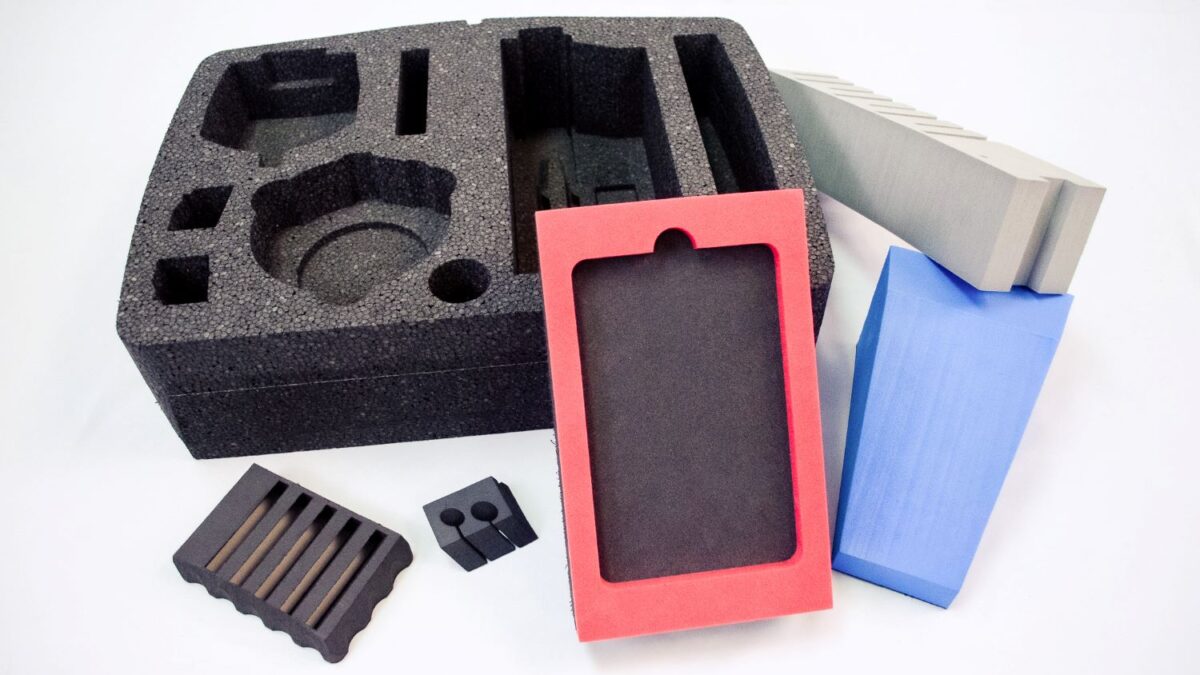We often get questions about foam density. More specifically, how it impacts a foam’s performance, durability, and protective capabilities. Foam density can affect how well the foam performs in various applications, particularly in protective packaging and cushioning for shipping, so it’s important to consider when choosing a foam for your application. What is foam density, and what do shippers and manufacturers need to know when selecting the right foam for their needs?
What is Foam Density?
Foam density refers to the mass of the foam per unit volume, typically measured in pounds per cubic foot (lb/ft³) or kilograms per cubic meter (kg/m³). Essentially, density indicates how much material is packed into a given space. Higher density foams contain more material in a specific area, making them heavier and more compact, while lower density foams are lighter and less dense.
The density of foam plays a significant role in its properties, such as its compressibility, resilience, and durability. Understanding the density of foam is essential for selecting the right type of foam for various applications, particularly those that require shock absorption, thermal insulation, or cushioning.
How Does the Density of Foam Impact Protection?
The density of foam directly influences its protective properties. Higher density foams are generally more resilient, offering greater resistance to compression and providing better support for heavier or fragile products. However, lower density foams are softer, making them better suited for cushioning lightweight or delicate items that could be damaged by a harder material.
When choosing a foam based on its density, consider:
- Shock Absorption: denser foams have a higher capacity to absorb energy, making them ideal for protecting heavier products that might experience significant impacts during shipping. The denser structure disperses shock more effectively, reducing the risk of damage to the product.
- Load-Bearing Capacity: higher density foams can support more weight without deforming. This is crucial for items that need to remain stable during transit, such as electronic equipment, automotive parts, or industrial machinery.
- Compression Resistance: foams with higher density resist compression better, making them perfect for applications where the packaging needs to maintain its shape and provide consistent protection over time. Lower density foams might compress too easily, reducing their effectiveness in protecting items from repeated impacts.
- Thermal Insulation: the density of foam also affects its thermal insulation capabilities. Higher density foams are more effective at preventing heat transfer, making them suitable for applications that require temperature control, such as packaging for pharmaceuticals or perishable goods.
What Should Shippers Look for in Terms of Foam Density?
When selecting foam for packaging, shippers need to consider the specific needs of their products. Make sure to look at the:
- Weight of the Product: heavier items typically require higher density foam for adequate support and protection. However, for lighter products, using high-density foam may be overkill and could unnecessarily increase costs.
- Fragility of the Product: fragile items, such as glassware or electronics, may benefit from a softer, lower density foam that gently cushions the product rather than providing a rigid barrier.
- Type of Transit: for shipments that involve long distances or multiple handling points, higher density foam can provide added protection against repeated impacts and compression over time.
- Environmental Considerations: if the product needs protection against temperature fluctuations or moisture, selecting a foam with the appropriate density and material properties is crucial.
Does More Density Necessarily Mean Greater Protection?
One common misconception is that higher density automatically means better protection. However, the ideal foam density depends on the specific application. While higher density foams offer greater load-bearing capacity and shock absorption, they may not be suitable for every situation.
Remember that over-protection can be a problem. Using excessively dense foam for lightweight products can be counterproductive. It can lead to increased costs, added weight for shipping, and potentially damage delicate items if the foam is too rigid.
Make sure to find a balance. The key is to strike the right balance between density and flexibility. For instance, medium-density foams can provide excellent cushioning while still being lightweight and cost-effective. Understanding the type of product and its specific needs can help shippers choose the most efficient foam solution.
Find the Right Foam for Your Application
Foam density plays an important role in determining the effectiveness of protective packaging. When selecting foam for your specific needs, don’t just consider its density, but also factors like load-bearing capacity, shock absorption, and thermal insulation properties. Ultimately, the goal is to choose the right foam density that meets your product’s protection requirements without overspending on unnecessary features.
Need help finding the right foam? Get in touch with us today to talk about your application!


